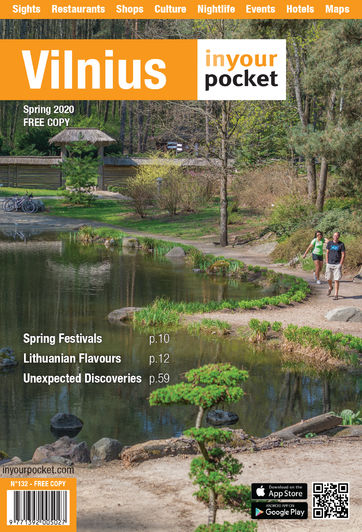In 1397, Vytautas the Great, known as Vitaut (Вітаўт) to the Belarusians and Witold to the Poles, settled a group of former Tatar prisoners of war and their families in the Grand Duchy of Lithuania in what was then the culturally and ethnically diverse region around Vilnius, or Vilna as it was called at the time. These Turkic newcomers, who became known as the Lipka Tatars (Lipka probably from the Crimean Tatar word for Lithuania), sprang up in several settlements in the area including today's tiny village of Keturiasdešimt Totorių (Forty Tatars), one of the oldest Lipka Tatar settlements in the country and just 20km south of Vilnius. The history and culture of the Lipka Tatars is a beguiling mix of influences embodying the religions of Islam and Christianity and a language that evolved into a form of spoken Belarusian that was written in the Arabic script. Despite their Islamic faith, the Lipka Tatars had an unusually liberal attitude towards women, with co-education being the norm, although this didn't stop polygamy, a practice that allegedly bought about the name Keturiasdešimt Totorių with the apocryphal story of a local Lipka Tatar man who had four wives who each bore him 10 sons. Keturiasdešimt Totorių is a typical local anomaly, being both infamous and seldom visited at the same time, the latter perhaps for good reason as there's almost nothing to see beyond the village's wooden mosque, first mentioned in written sources in 1558 and rebuilt in 1815 after Napoleon's Grande Armée raised it to the ground during the ill-fated invasion of Russia in 1812. Despite the lack of local attractions, a short visit to Keturiasdešimt Totorių is highly recommended, not least for anyone with even a passing interest in the strange and beguiling history of the region. Now looking entirely out of place, the mosque is the Islamic version of the local Catholic wooden village church, simple in design and unfortunately seldom open to the public. The main attraction however is the surrounding cemetery complete with gravestones dating back hundreds of years and many carved with a star and the Moon at the top with Arabic inscriptions underneath. Getting to the village can be a bit of an adventure for those without access to a car or the strength to cycle there. The N°42 bus runs fairly regularly from outside the train and bus stations but only goes as far as the small town of Pagiriai, 2km short of the required destination. Alternatively, a local service runs from the bus station all the way to Keturiasdešimt Totorių several times a day, continuing the journey to Skarbutenai before turning round and coming back again, thus giving visitors about 45 minutes to see the mosque.





Comments